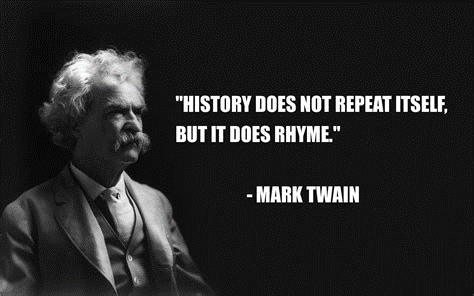
FEB 26, 2022
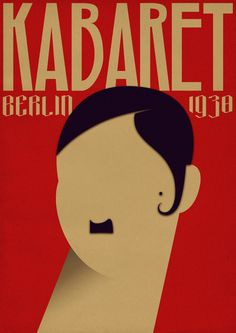
Each part of this series represents periods in Germany’s history that contributed to the rise of an invisible shadow government. What’s going on in the world today is mirroring what went on in Nazi Germany. This means that Germany’s experience can help us make an invisible enemy, visible.
In Part 3, we showed how Ludendorff set up the shadow government, using covert agents to infiltrate political parties and radicalize their members.
The goal of this shadow government was to leave the German people with nothing, ensuring they willingly submitted to Adolph Hitler in hope of restoring their nation back to what it was.
Here we will explore exactly what this shadow government did to Germany, and the methods they used.
1920s Germany: Mass Psychological Collapse
Understanding mass psychosis:
To place people into mass psychosis requires the creation of a battlefield in the minds of the population. The key to understanding this engineered battlefield is to understand Hegel’s ‘master – slave dialectic’.
Understanding that people are being goaded into becoming a victim or a tyrant; a slave or a master; allows them to transcend this narrative completely. Just don’t play their game. True freedom exists beyond this Hegelian mind-battle.
Engaging with the psychosis only brings division. Divided, the people remain weak. The invisible enemy understood this and set about crafting strategies that would keep people constantly divided and fighting over whose truth is correct. Chaos is essential to forming mass psychosis.
Political Chaos
Weaponized philosophy was deployed to create total political chaos on both sides of the aisle. Implemented via propaganda in the media and the aggressive ideology of infiltrators, the country was plunged into racial divide, religious divide, political divide, class warfare and hyperinflation. This resulted in excessive degeneracy, including prostitution and pedophilia.
With society and the economy in total ruin, big corporations came in and took over assets when the nation was at its most vulnerable. (This will be unpacked in Part V).
On paper, establishing democracy in Germany was an important milestone. In practice, it created total pandemonium. During the brief Weimar Republic era, the country churned through 11 different Chancellors. A complete absence of clear policy direction meant there was little, or no stability.
This instability resulted in an incredible amount of political violence:

In addition to the numerous assassinations, fascists and communists went about overthrowing local governments. Amidst the mayhem, a new nationalistic group had also emerged:
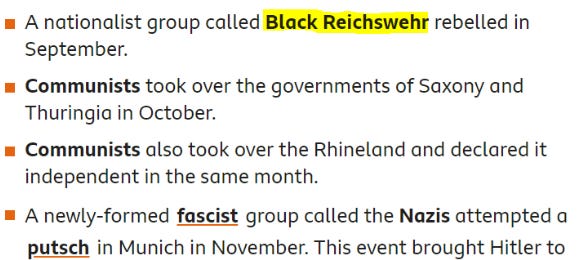
https://www.bbc.co.uk/bitesize/guides/z8vt9qt/revision/4

Who were the Black Reichswehr? Where did they come from?
The Black Reichswehr was a secret paramilitary group promoted by the German military. Recall that the Versailles Treaty applied strict military restrictions on Germany, particularly around army deployment and intelligence gathering. Since the group was not officially part of the Reichswehr, it circumvented the Treaty. They carried out many assassinations, even after they were officially disbanded in 1923.
In Part II we noted that one of the triggers for WWI was a political assassination carried out by a terrorist group called the ‘Black Hand’. We noted that the leader of the Black Hand was head of Serbian military intelligence, and he travelled to Germany in 1906 to receive training from the Reichswehr. The logo for the Black Hand was a skull and bones, just like the military insignia of the Prussian Hussars.
Black Hand.
Black Reichswehr.
Political assassinations.
Coincidence?
The origin of the Black Reichswehr was a badly kept secret. Those in command of the organization were former officers from the General Staff, once commanded by General Ludendorff:
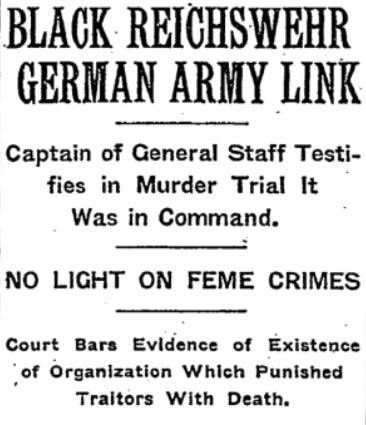
Notice that the court would not hear evidence implicating the Black Reichswehr Captain in a political assassination. Eventually, he would be acquitted:

Here is another case where political violence at the hand of a Black Reichswehr Chief was ignored by the courts. These clear cases of crime were simply being discarded.
Anyone experiencing Déjà vu?
The average German would be distraught as this new ‘democracy’ was causing levels of violence and turmoil they had never experienced. Many were reminiscing about the old days of their benevolent dictator, the Kaiser.
Divided By Race and Religion
The persecution of Jews, gypsies and other minorities during this time was a horror show that others have well-documented. However, I just want to point out one new group that had emerged, founded by a German-born American:
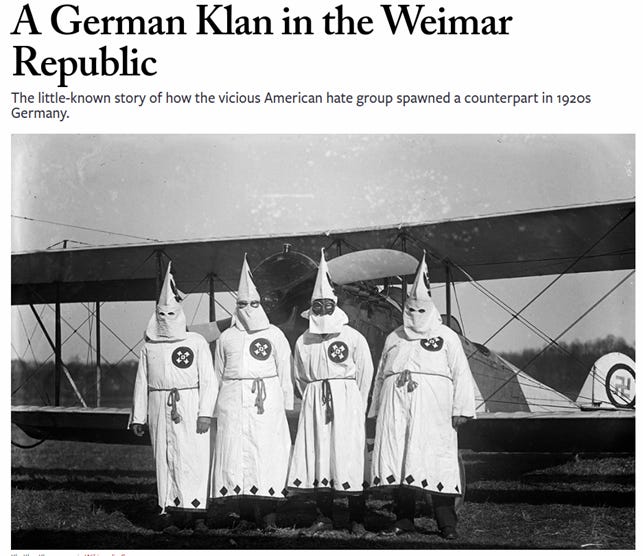

Recall, that the House of Hohenzollern acquired the original lands of Baltic Prussia from the Order of the Teutonic Knights. The last Grandmaster of this Teutonic Order was Albert, Duke of Prussia.
Wherever you find violence and deception, you will usually find Prussia.
Surrounded by such bloody violence, the people would debate the cause of it all. Was it antisemitism? Racial hatred? Sexual immorality? Religious bigotry? Most of those theories were previously seeded by the man running the shadow government – General Erich Ludendorff. His plan was not to have intellectual debate; it was to create total chaos.
Weimar Hyperinflation
The hyperinflation that occurred in 1923 was horrific. The trigger for it dated back to WWI, which you will recall, was a war that Germany initiated:
“Due to Germany’s obligation to pay large reparations after World War I, a hyperinflation was induced reaching its peak in November 1923, when the American dollar was worth 4,210,500,000,000 German marks.”
The agreements within the Versailles Treaty were starting to bite. Germany was falling behind in their payments. In 1923, France and Belgium decided to teach the Germans a lesson. Their armies marched into Germany and began the Ruhr Occupation. If Germany could not make their required payments voluntarily, they would be forced to under military occupation.
France and Belgium sealed off the region, expelled 150,000 civilians and forced the workers to stay. Assets were seized as “payments in kind” for reparations. German coal mines were seized and the workers were ordered to keep working… for the French.
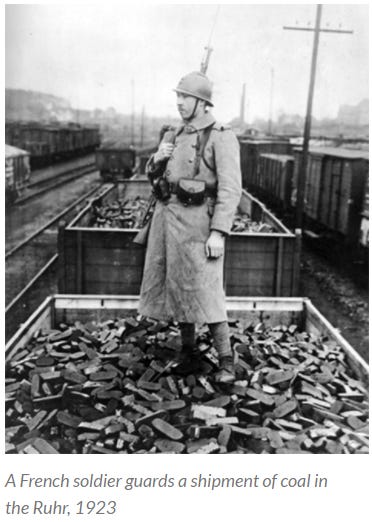
Germany did not take kindly to this occupation. Losing control of such an industrious region would have a disastrous effect on supply chains. The Germans sent out a clear warning, by using memes – 1920s style!
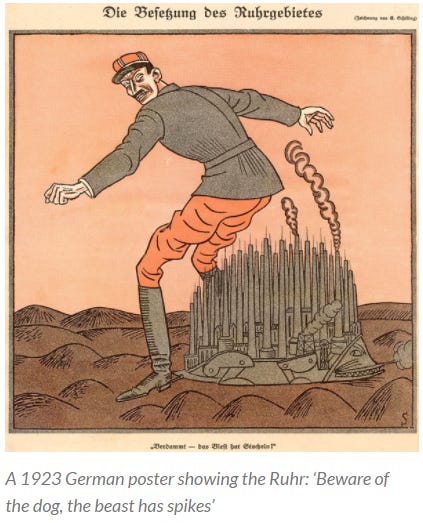

Those German nationalists that infiltrated the Ruhr would all come from Hitler’s Sturmabteiling, the Freikorps and possibly the Black Reichswehr. These were all subsets of General Ludendorff’s creation and illustrates the operation of the invisible enemy as it moved through Germany, creating chaos and hardship.
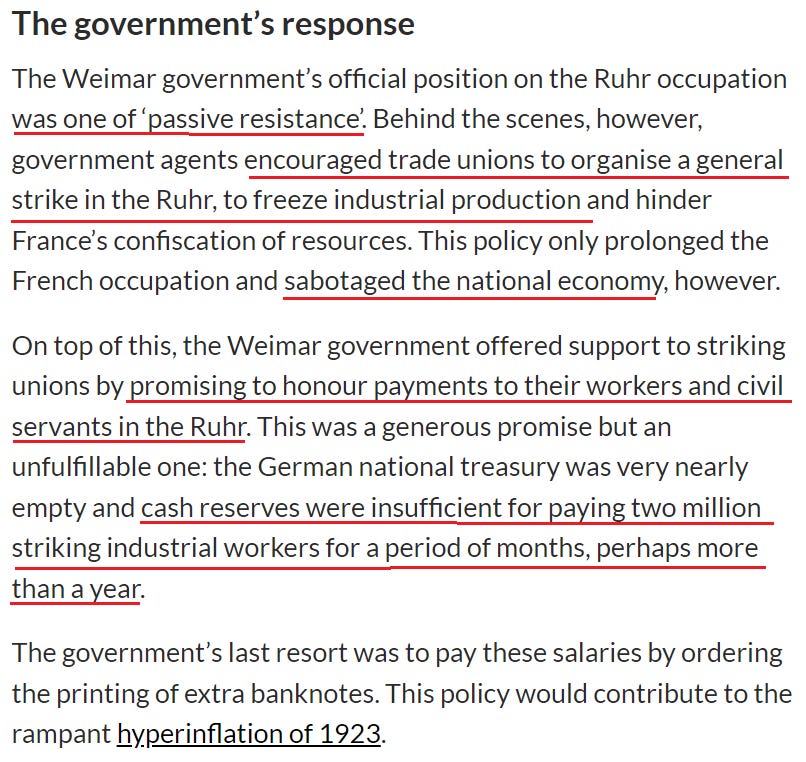
A Government decision to freeze industrial production would hurt the French, but not as much as it would hurt Germany. The Weimar government destroyed their own supply chain and encouraged saboteurs to do it. They also decided to pay people to stay at home instead of work. Freshly printed money allowed the useless public service to be flush with funds.
This endless money printing was possible under a fiat money system. Almost immediately, there was more money chasing less things. Since the government enabled saboteurs and a general strike by coal workers, coal production collapsed. Very quickly the price of coal skyrocketed. This in turn affected the cost of production for food, steel and other essential goods. Soon the cost of everything began to rise. Hyperinflation had set in. Money would be better used as toilet paper, fuel for a fire or something to keep the kids occupied:
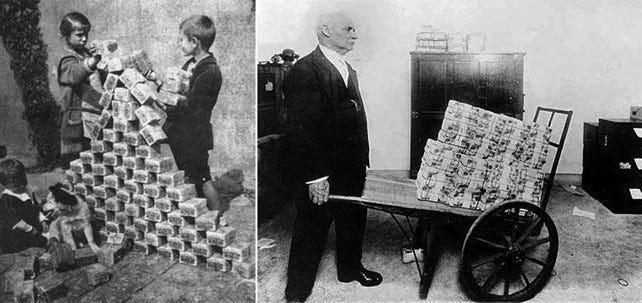
Hyperinflation wiped out the middle class. Millions of salary workers had their wages fall below the cost of living. Bank savings were wiped out. Eventually, people struggled to buy food. Workers that once had salaries that could buy a house and raise a family, were now willing to work for a day just to buy food to survive. It was akin to slave labor.
Only those who owned parts of the supply chain would survive the hyperinflation. While many worker-folk were losing everything, corporations and industrialists became incredibly wealthy.
Some would even descend to the lowest levels of work in order to survive.
Babylon Berlin
Despite this economic destruction, an incredible cultural revolution emerged in Berlin. It was fascinating, and it really deserves its own separate investigation to do it justice. Whether or not you liked what was produced, the Weimar kultur offered an incredibly creative environment which still impacts the world today.
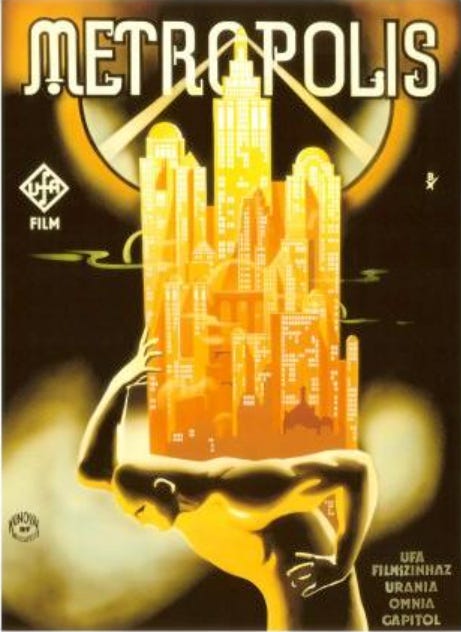
Weimar Germany had a lasting impact on film, theatre, art, architecture, literature, music and even science. Berlin became a center of creativity and progressivism. In an era when sexual expression was frowned upon, or was illegal, Berlin became the most liberal place in the world. People from around the globe came to Berlin to participate in this free expression.
There were very few moral boundaries in Berlin during this time. Many people were openly LGBT, well before the rest of the world even knew what the letters meant.
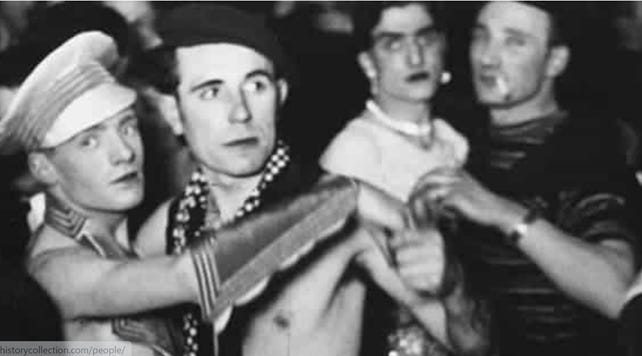
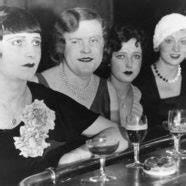
Life in Berlin was like a cabaret show. When democracy arrived, free expression was taken to its extreme. Removal from a regime that regarded free will and self-expression as mortal enemies, appeared to create an equal energy in the opposite direction.
Was this the new normal, or was it allowed to happen as part of a plan to return Germany back to its totalitarian past?
Accompanying this new free and creative party-atmosphere was a dark underbelly of crime, drug taking and prostitution. The people had lost everything to war, plague and a famine caused by hyperinflation. Political violence and revolutions were commonplace. People were losing faith and were turning to vice and crime as a means of survival.
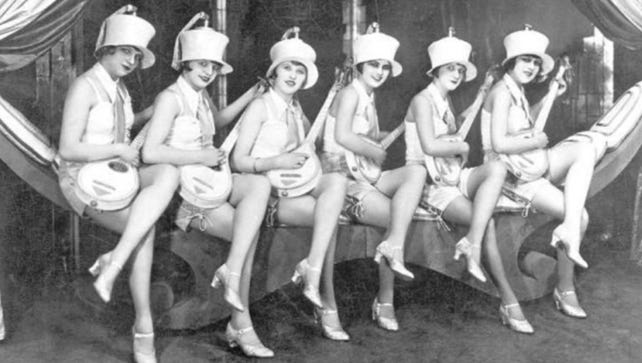

http://wps.franklincollege.edu/chayes/culture-in-weimar-germany/
Cocaine became as acceptable as coffee. Prostitution was rife, as many desperately tried to make ends meet. This atmosphere attracted people from all over the world to travel to Berlin and realize their wildest fantasies.
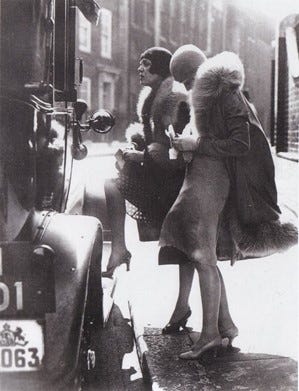
Mother and daughter offer themselves to passing traffic.
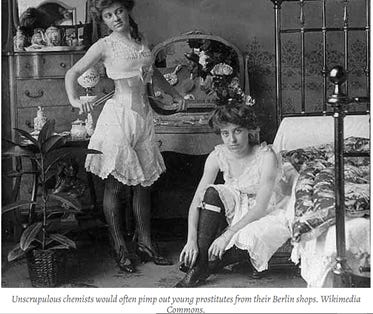
Unfortunately, an even darker, more-sinister industry emerged through this chaos and poverty. Children had also become sexual commodities. The reasons why this happened are inexplicable to a sound mind, but an industry of total depravity and evil had been introduced to Berlin culture. It seems people would do anything for money.
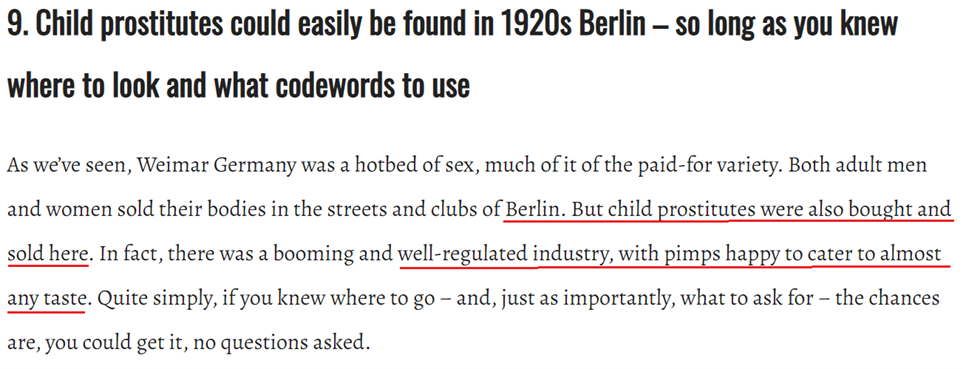


For all the good things Berlin offered, this activity crosses the ultimate red-line. The heinous abuse of children transcends all moral boundaries. Everyone who was complicit was in the cross-hairs of the overwhelming majority of everyday Germans wanting their country back. A nihilistic moral decay had set into the nation’s capital.
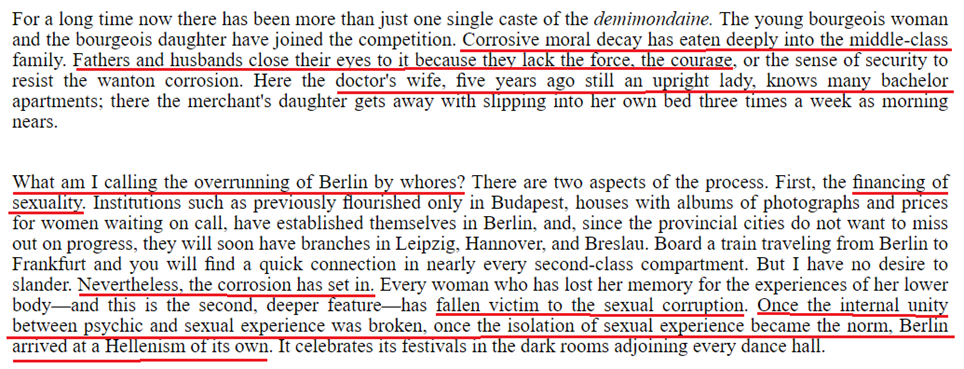
http://www.weimarberlin.com/2018/03/prostitution-in-berlin.html
Who was supplying children to this market? Who were these celebrities and international businessmen ordering children like pizza? Why were pharmacists involved? These were all questions of the day, and they remain remarkably familiar, today.
Other than to condemn these acts as the worst evil imaginable, I can find no justification for such crimes. Whoever these people were, they were sick and needed to be exterminated.
The rage that was building within average Germans would one day be harnessed by yet another creation of Ludendorff, Adolph Hitler.
Summary:
We have said previously that Germany was being thrown to the wolves, following the successful infiltration and transition of power to Washington. This transition would commence in 1917. Let’s review what actually happened:
Germany suffered a humiliating military defeat.
The imposition of the Versailles Treaty would send the nation broke.
The Reichswehr created a shadow intelligence operation, carried out domestically.
The Government knew about the shadow government, but allowed and enabled it.
Political and racial violence was fomented in the streets.
Class warfare was running rampant.
The new Republic was run by the far left, resulting in gross economic mismanagement.
The government paid workers to stay at home, rather than go to work.
This led to a government made energy crisis, and eventually hyperinflation.
Cartels had taken control of supply chains. (to be unpacked in Part V)
Fascists and Communists were rioting and overthrowing local government.
Political violence at the hand of the Black Reichswehr was being ignored by the courts.
Hyperinflation meant that wages fell below the cost of living.
A hyper-progressive culture emerged, led by the LGBT community.
Sexual debauchery had exploded.
Pharmacists were trafficking children for sex to the rich and famous.
